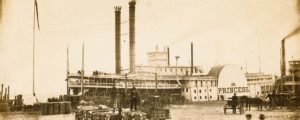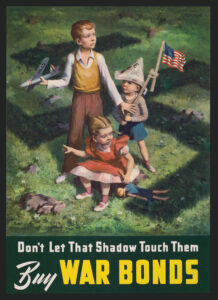The Clamorgans: One Family’s History of Race in America
by Julie Winch; Hill and Wang
What exactly did race mean in 19th-century America? The Clamorgan clan vividly embodies its ambiguities and historical shifts.
In 1781, Jacques Clamorgan arrived in St. Louis to seek his fortune and escape his debt in New Orleans, the start of a lifelong pattern of avoiding unpleasant financial issues. His talent for charming, cajoling and hounding Spanish and other officials to either sell or give him land allowed him to accumulate more than a million acres. The Frenchman accumulated several black mistresses, too, and passed his land to the resulting children who survived him upon his death, triggering nearly two centuries of complex litigation.
The Clamorgan clan’s quest to persuade the United States government to recognize their land claims is a primary theme. But the book’s real draw is its exploration of what it meant to live in this country in the 1800s if you were legally considered black but looked like you could be white.
Clamorgan’s descendants quickly realized that, given the numerous restrictions on their lives as free people of color, they would fare far better if they were Caucasian. Some figured out ways to “pass,” with results from joyful to disastrous, as they navigated the changing rules about race over time. Jacques, for instance, didn’t marry his mistress and slave, Ester, but could have, as late-18thcentury Spanish law allowed interracial unions. In 1910, five generations later, Jacques’ great-grandson Louis Clamorgan and his wife, Louise, faced a national scandal when their grandchild was born with dark skin that blew the family’s “white” cover. The news, played out in headlines across the country, threatened the careers of several family members and the family home in an exclusively white St. Louis neighborhood. It also rendered their daughter Cora’s marriage to a white man illegal, because Missouri prohibited interracial marriage until 1969.
In between, we meet Apoline, Jacques’ daughter, a smart businesswoman who decided she would rather enjoy extravagances as a white man’s mistress than struggle as the wife of a free man of color with few job prospects legally available to him. Her sons Louis and Henry made their mark as owners of a luxurious bathing saloon, which cleansed no less than Ulysses S. Grant and Edward, Prince of Wales, in its Italian marble tubs. A younger son, Cyprian, passed easily for white but still lived a chaotic life as a soapmaker, caterer, banker, self-proclaimed attorney and hothead; at one point he started a shootout with a man who later became acting governor. In one of the family’s biggest successes, Henry Clamorgan Jr. renamed himself Forde Morgan, earned his M.D., settled in Manhattan with his wife, the playwright Harriet Ford, and traveled in circles befitting the prosperous white man he had reinvented himself to be.
The lawsuits continue from one year to the next, but the Clamorgans, with their determination and idiosyncracies, are oddly easy to root for, even if they make the mistake of reportedly turning down a government settlement worth millions in today’s dollars. Winch’s tone is entertaining and almost merry—she clearly enjoys her material. Her sense of timing is strong, too. The Clamorgans gains a new layer of meaning read now, when the United States has a biracial president who is almost always described as African American.
Originally published in the October 2011 issue of American History. To subscribe, click here.




